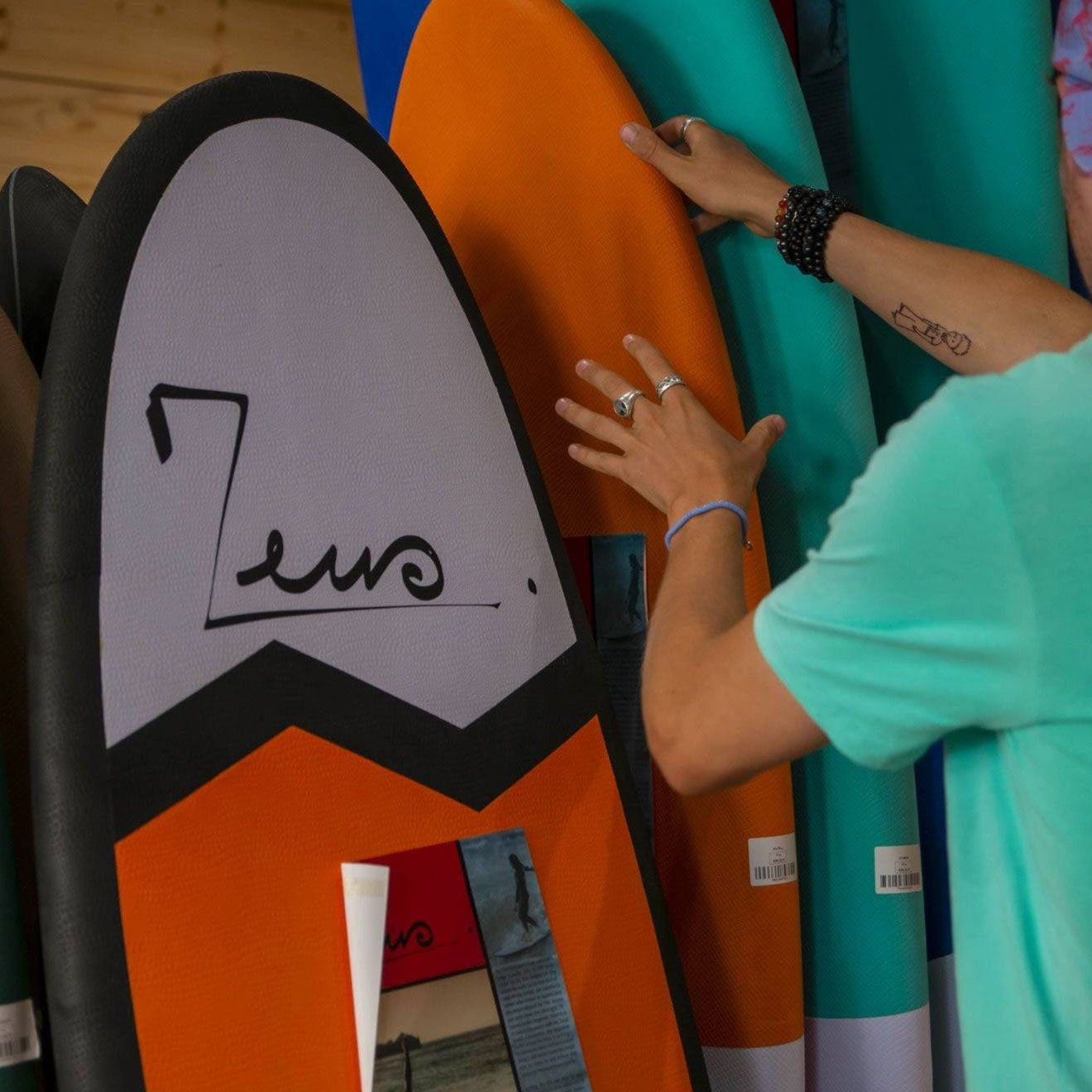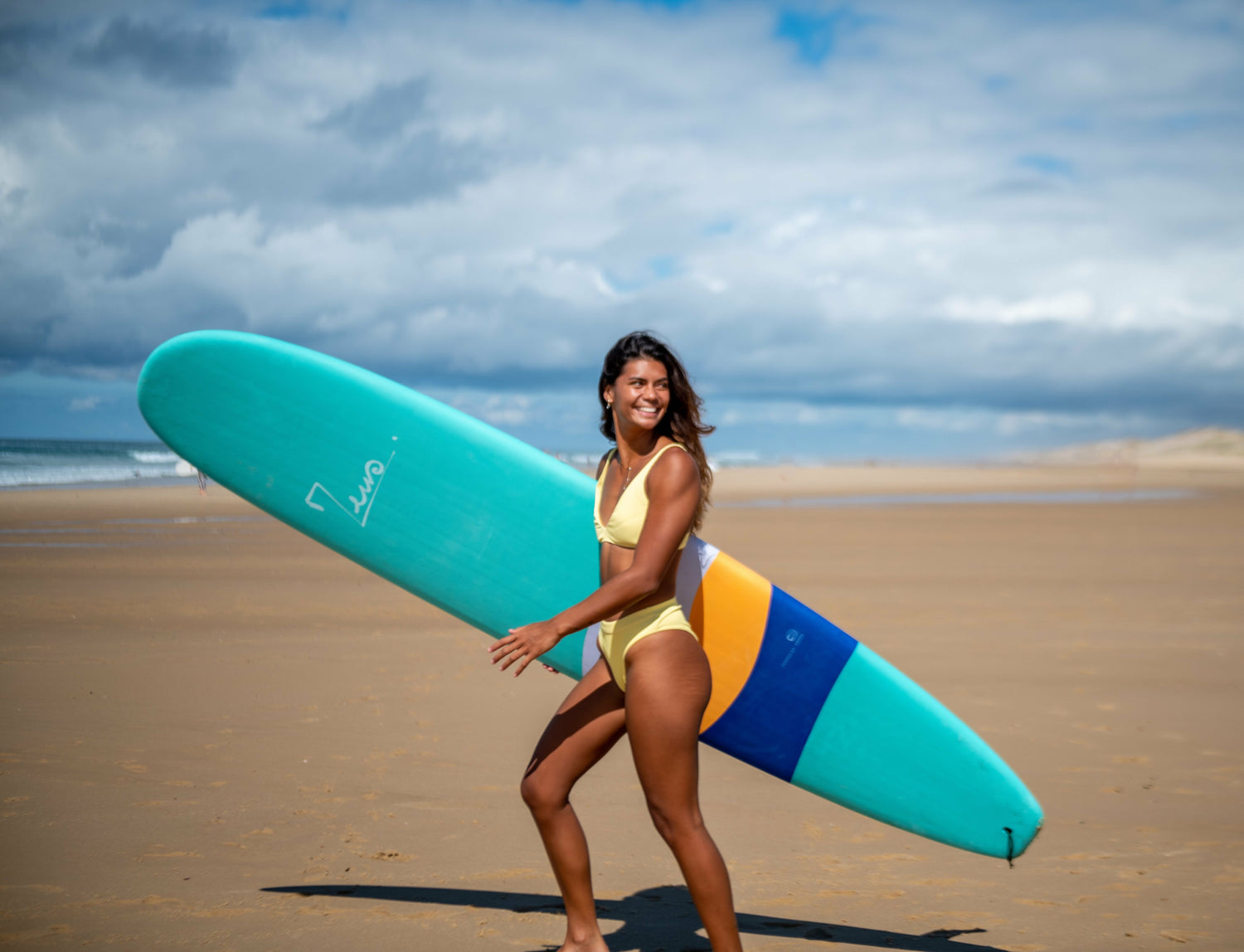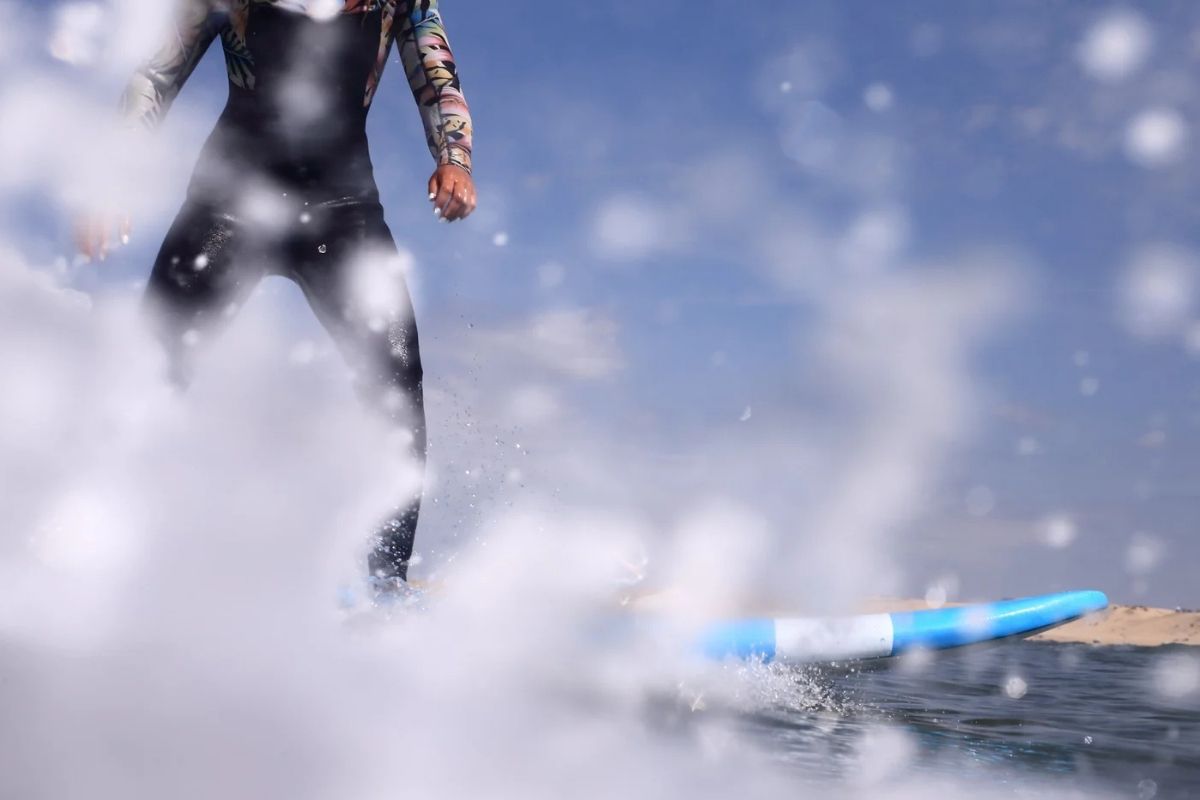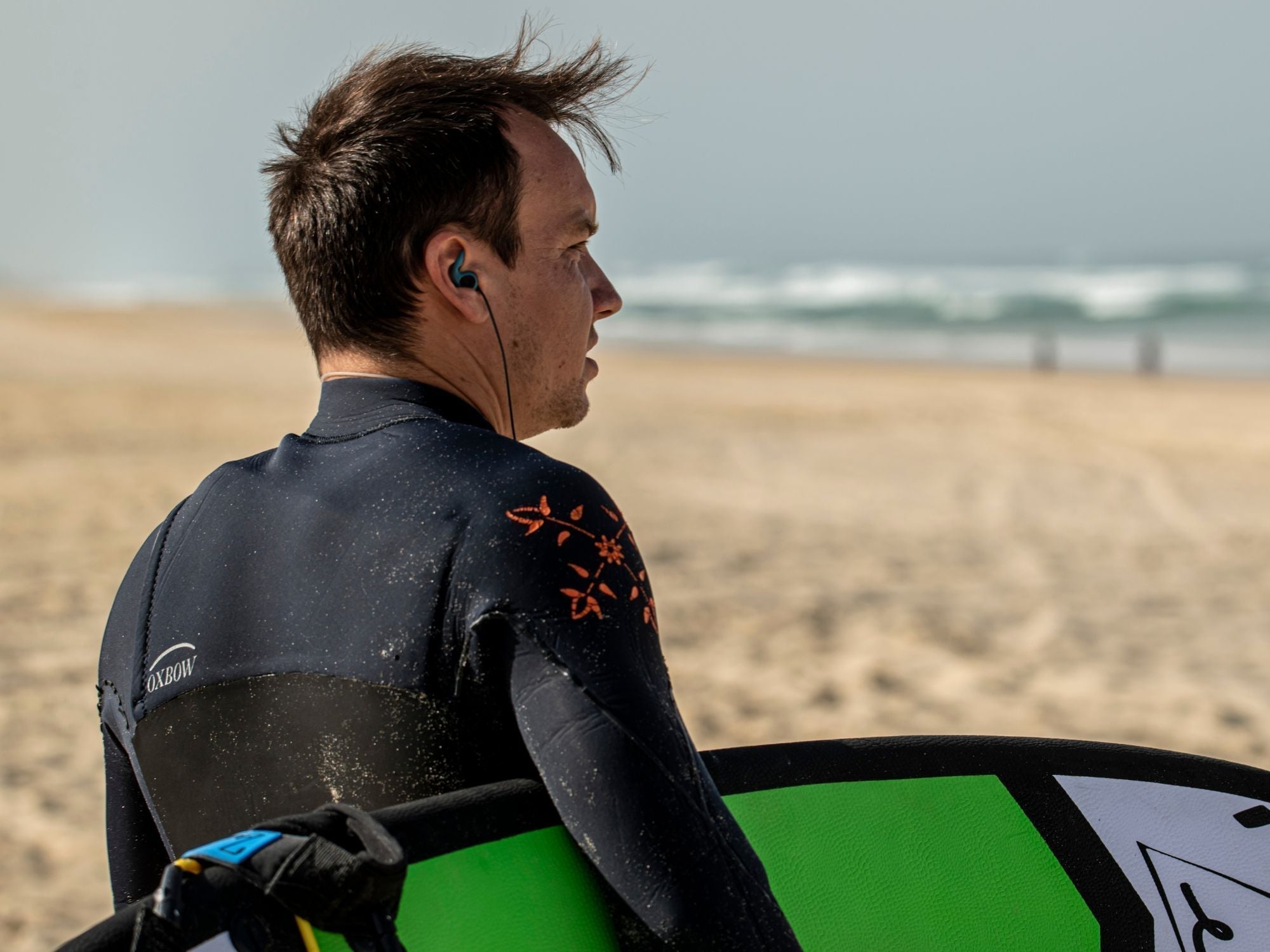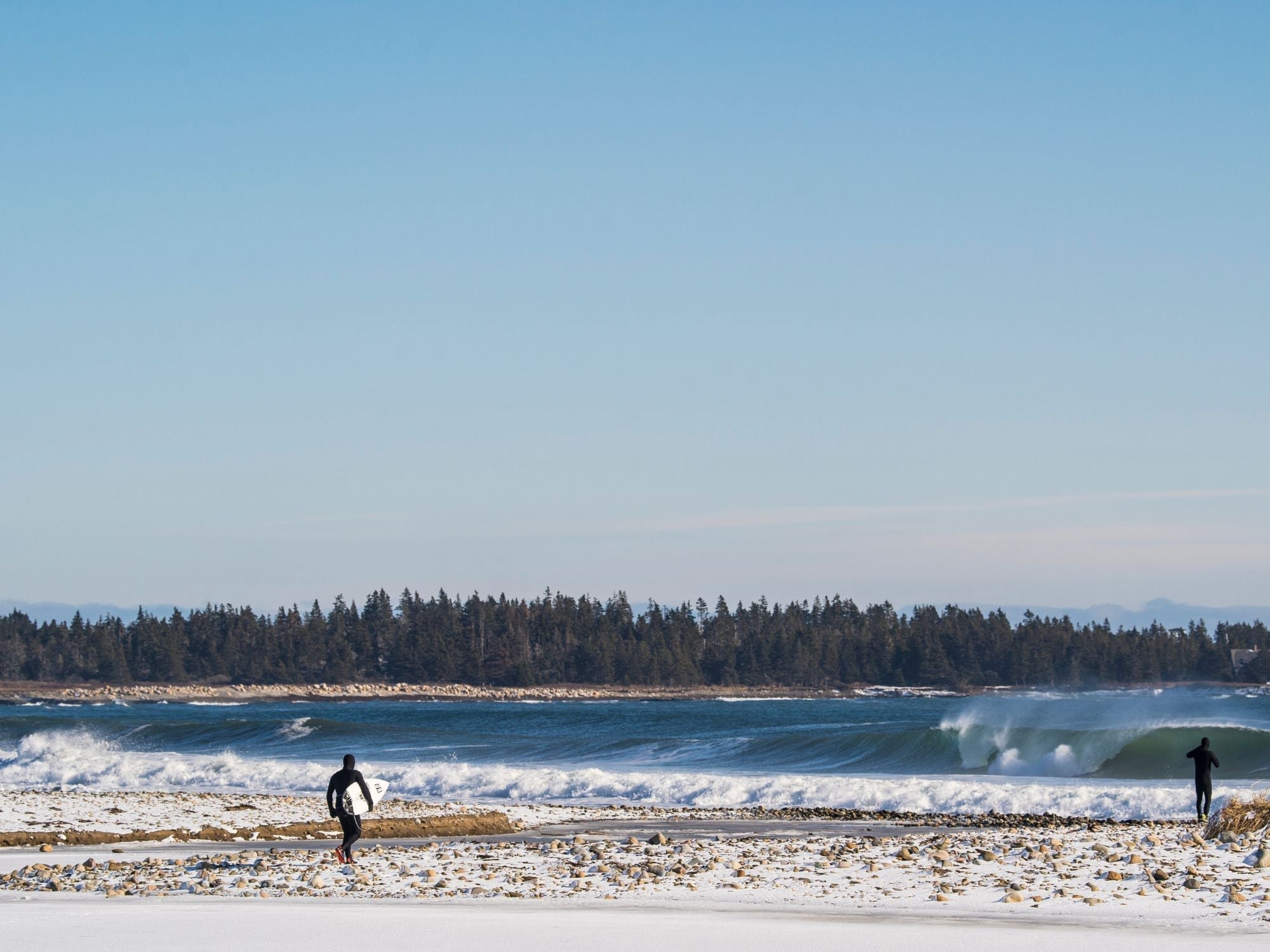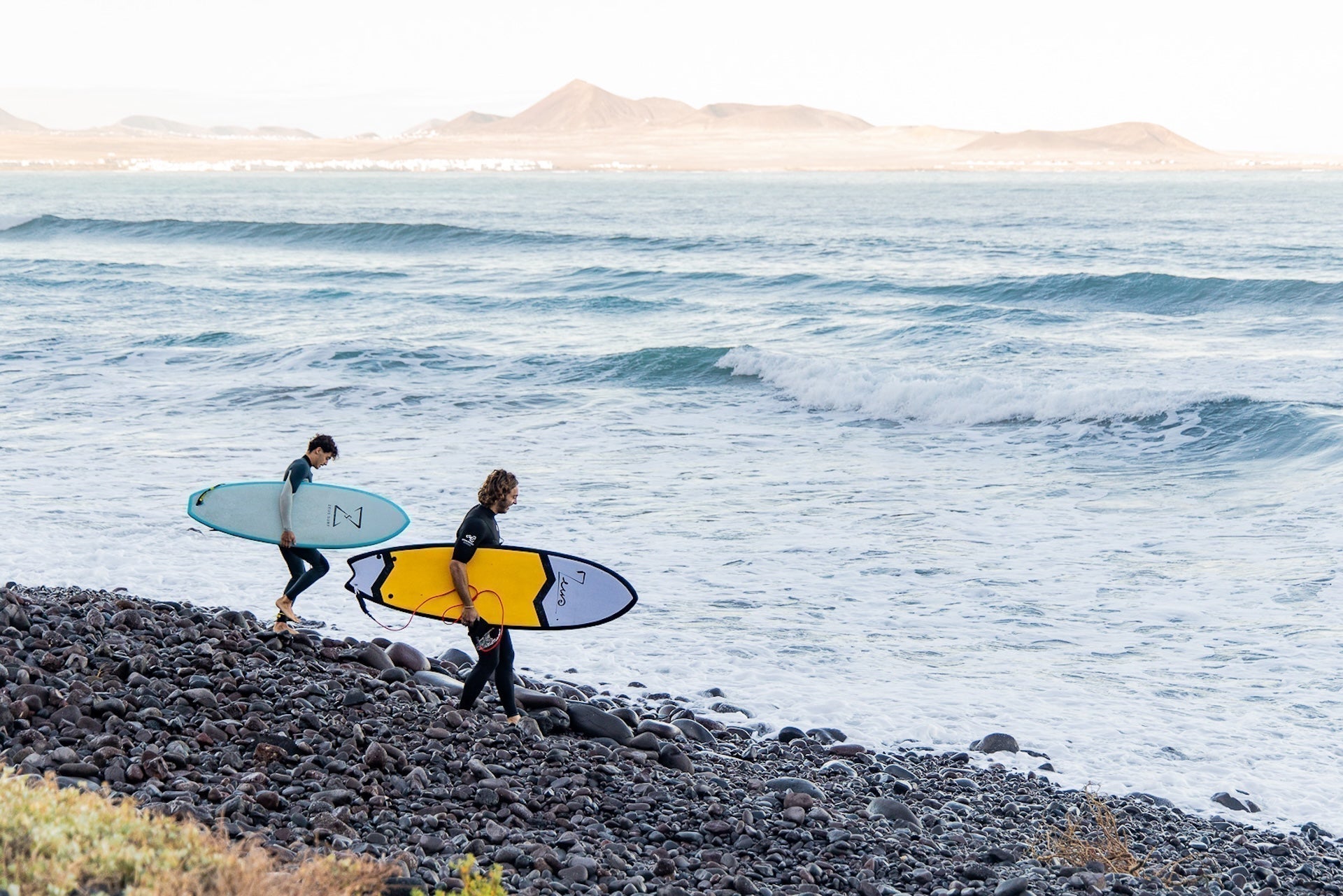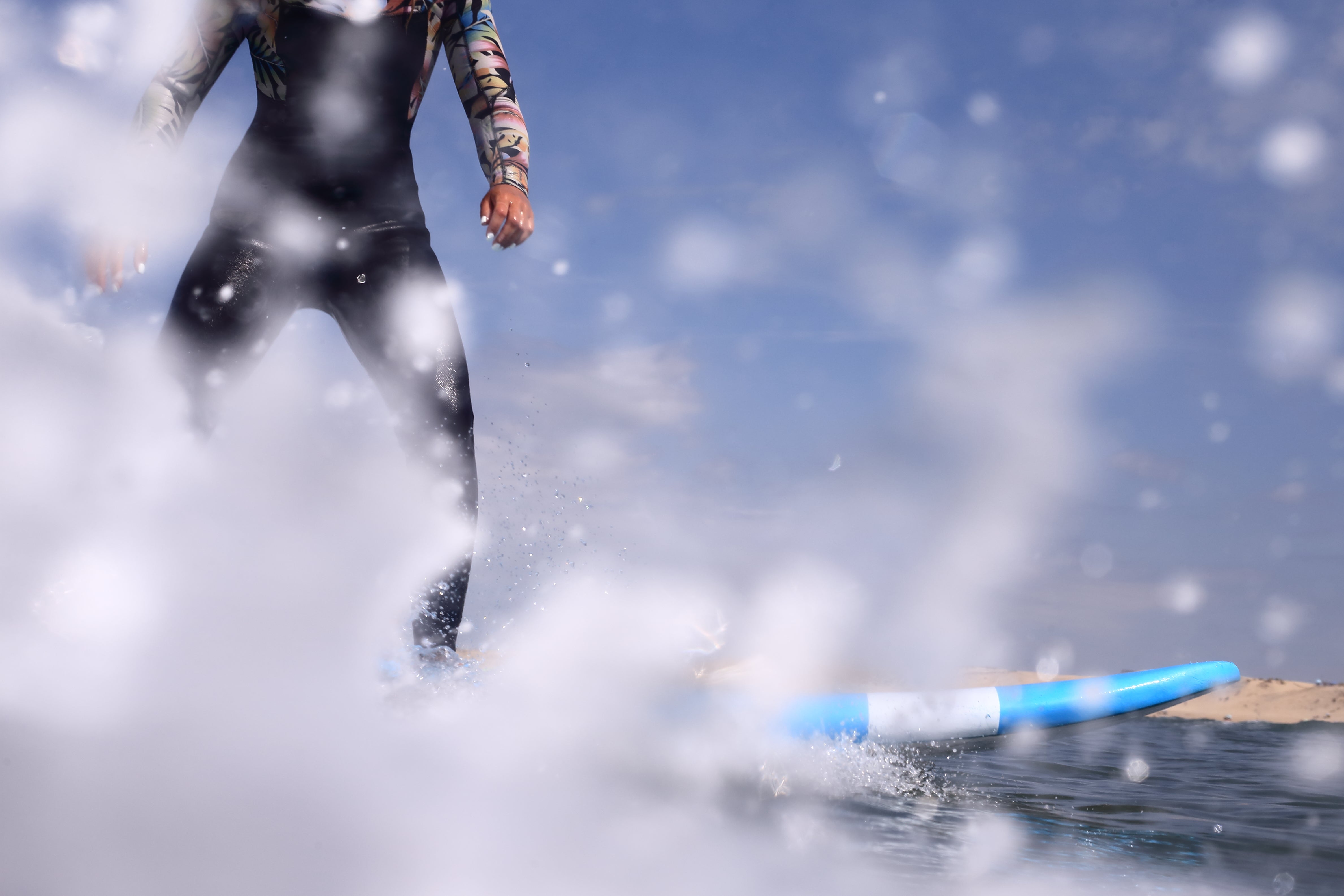The ultimate guide to choosing your longboard deck.
Longboard surfing is more fashionable than ever. Many surfers, beginners and experienced alike, are seduced by this type of board that is accessible , fun and easy to handle.
With the longboard , no more frustration of repeated falls on shortboard when you're starting out! Make way for memorable sessions, unique gliding sensations, and accelerated progression.
In this guide, we will detail everything you need to know to choose THE longboard of your dreams, whether it is your first longboard or not.
So, whatever your level and your goals , you will find here our valuable advice to find the longboard that suits you.
👉🏻 Find our selection of our longboard on the online store 👈🏻
 Longboarding is more than a board, it's a state of mind. It transforms every outing into a friendly and relaxed experience. Perfect for sharing unforgettable moments with friends or family, it makes surfing a real child's play accessible to all.
Longboarding is more than a board, it's a state of mind. It transforms every outing into a friendly and relaxed experience. Perfect for sharing unforgettable moments with friends or family, it makes surfing a real child's play accessible to all.
Good reasons to start longboard surfing:
Before going into the details of the criteria for choosing a longboard , let's start with a quick reminder of the many advantages of this type of shape :
A shape accessible to beginners
Unlike short boards like the shortboard , which are known to be difficult to master for beginners , the longboard surf is suitable for all levels of practice. Its great length provides stability and buoyancy , allowing for smooth learning to surf. Even with little or no experience, it is entirely possible to stand on a longboard and quickly feel exhilarating gliding sensations . It is THE board par excellence for beginners and rapid progress.
Exceptional sliding sensations
Glide is the very essence of surfing. However, few boards offer a feeling of floating as pleasant as a longboard . The elongation of the board literally allows you to " fly " on the wave, in a very fluid feeling. The slightest movement of the wave is felt, for maximum pleasure with minimum effort. Pure sensations guaranteed!
Speed and control
Longboards often develop a nice speed , while remaining perfectly maneuverable. Where the shortboard requires anticipation and commitment , the longboard offers total control , allowing you to adjust your trajectory at will. The great stability also allows simple, but so enjoyable, tricks, like walking or dancing on the board.
Suitable for most spots
You can literally surf most waves with a longboard , regardless of their type and power. High-volume longboards allow you to have fun even on small, soft waves that would not carry you with a short board. In terms of spots, they are suitable for most of the waves found in France and Europe.
A friendly surfing style
Longboarding promotes a fun and relaxed surfing experience. Its intuitive and accessible side makes it easier to progress. Surfing with friends or family becomes child's play. A way to share memorable sessions!
With all these advantages, it's no wonder that longboards are so popular. To choose the right one, you now need to look at the different selection criteria.
2. Longboard VS Shortboard
First of all, it is important to understand what mainly distinguishes the longboard from the shortboard, these two large families of boards.
The longboard is characterized above all by its length, generally between 8 and 10 feet (2.40 and 3m). This large dimension provides stability and buoyancy . The board can also be quite wide, with a large volume allowing it to float well, which is ideal for surfing small waves.
Conversely, the shortboard is less than 7 feet (2.15m). Shorter, it will also be narrower and less thick. This makes it faster and more maneuverable , but also less accessible for beginners.
While the shortboard is designed for experienced surfers looking for thrills, the longboard offers control and balance, for a practice accessible to all levels. Its progressive learning avoids unpleasant surprises!
To summarize the essentials:
- Longboard : length 8-10 feet, great stability, accessible to beginners
- Shortboard : length < 7 feet, dynamic, demanding, thrills
Stability or thrills? This is what should guide your choice between longboard and shortboard !
3. The different types of Longboard
Longboards are a large family that actually covers boards with very distinct characteristics. We can roughly distinguish 3 main types of longboard:
The Mini Malibu or Mini Mal
The Mini Malibu (sometimes spelled Mini Malibu) is an intermediate longboard measuring 7 to 8.6 feet. These can be said to be smaller versions of longboards . These shapes are long enough to remain stable and accessible, but the Mini Malibu is still maneuverable and versatile.
This is an excellent choice for those who are just starting to surf. The mini malibu also allows you to have fun on small summer waves. In short, it is an easy board for everyday use. This type of board, more compact , is also easier to transport.
The Classic Longboard (Noserider)
This is the traditional longboard par excellence. Its generous dimensions, with a length of over 9 feet and a high volume, make it the ideal board for beginners . The noserider (literally “nose surfer”) is also perfect for the vintage style of surfing, with all the classic figures on the front of the board. Stable and easy, it remains however a little limited when it comes to evolving on hollow and fast waves.
The Performance Longboard (HPLB)
The high-performance longboard or HPLB (High Performance Longboard) offers a completely different style of riding. Often shorter (8'-9'), its refined outline and angular rails make this shape a real rocket that is faster and more responsive. The HPLB is aimed at experienced surfers looking for more sensations and radicality . On this type of board, it is possible to chain dynamic maneuvers and figures like on a shortboard. Be careful, however, this gain in performance comes at the expense of accessibility and control .
Surf Longboard Types Comparison Chart
| Longboard Type | Length | Features | Ideal for |
|---|---|---|---|
| Mini Malibu (Mini Mal) | 7' - 8'6" | Handy, versatile | Beginners, summer waves |
| Classic Longboard (Noserider) | > 9' | Stable, high volume | Beginners, vintage style |
| High Performance Longboard (HPLB) | 8' - 9' | Fast, responsive | Experienced surfers, dynamic maneuvers |

4. What length should I choose?
Regarding the sizing of the board, the length is obviously the first criterion to consider carefully .
In longboard, the length classically varies from 8 to 10 feet. To choose yours, here are some simple guidelines:
- 8'6'' (2.60m): recommended for lighter surfers (- 60 kg)
- 9'0'' (2.75m): ideal for the majority of surfers (60-80kg)
- 9'6'' (2.90m): preferable for heavy surfers (+ 80kg)
These measurements are indicative. Don't hesitate to test boards close to these sizes to see what suits you best. On a longboard , you will still favor stability and glide over maneuverability. It is therefore better to remain cautious and go up in length.
To summarize, the lighter and more experienced you are, the more you can go down in size to gain dynamism . Conversely, if you are a beginner or if you are strong, bet on a good length for stability and control.
If you already have some experience in surfing, our article " Which surfboard for an intermediate level " could help you to further your choice.
5. What width should I choose?
Besides the length, the width or “width” represents the second essential factor for the dimensions of the board. In longboarding, an average width of 20 to 23 inches (50 to 58 cm) is generally considered.
The wider the board, the more stability and buoyancy you will benefit from.
However, too much width will hinder speed and agility in turns. For maximum control, aim for a width of 20" to 22", depending on your size. Narrower longboards will be better suited to lighter surfers looking for more maneuverability.
6. What thickness should I choose?
In addition to length and width, thickness completes the triptych of dimensions to study on a longboard. In absolute terms, it varies from 2 to 4 inches (5 to 10 cm).
Again, the thicker the board, the more buoyancy and stability you will benefit from. Conversely, a reduced thickness will allow you to lower the rails and gain speed .
Concretely, for maximum versatility, aim for a thickness between 2''6 (6.5cm) and 3''1/2 (9cm). This will give you stability without making the board too heavy.

7. Outline and shape
Beyond the simple dimensions, the general shape of the board will greatly influence its characteristics and performances. There are mainly two main types of shape for longboards :
The shape of Noserider
Traditional noseriders feature high volume, significant width and rounded rails. Their flared outline gives them stability and buoyancy. The tail is often square, which increases the lift surface.
This classic shape mainly favors sliding and tricks on the front of the board. It is the board par excellence for calm and fluid surfing.
High-performance shaping (HPLB)
Conversely, high-performance longboards rely on a narrower, more tapered outline . They also have less volume at the rear.
Their rails are more angular , for efficient water evacuation and greater speed.
Thanks to this specific design, the HPLBs are much faster and more maneuverable than the classic noseriders. They allow you to chain radical maneuvers and more radical figures. Strong sensations guaranteed!
To summarize, the choice of outline will depend above all on your objectives:
- Noserider > stability, glide, classic figures
- HPLB > speed, handling, sliding sensations
8. Number and types of fins
Another essential technical criterion: the choice of fins, also called drifts. On longboards, we find different configurations:
1 fin (single fin)

The mono fin is the most common option on traditional noseriders. Wider and deeper, this single central fin optimizes stability while limiting speed. It is the perfect option for pure glide and classic tricks.
2+1 fins
2+1 fin configurations are commonly found on performance longboards. They consist of 2 side fins plus a smaller center fin. This compromise provides a good balance between conduction speed and stability.
3 fins (Tri fin)
The 3 aligned fins significantly increase stability and control compared to the 2+1. This configuration is well suited for longboards intended for beginners.
4 fins: Quad

With 4 fins, also called quad, maneuverability and speed reach their peak. Rail conduction is also improved. This radical option is frankly aimed at experienced surfers. It is a fairly rare configuration for a longboard.
In short, the higher the number of fins, the more you gain in maneuverability and top speed. But, you will also lose stability. It's up to you to choose the configuration according to your level and your gliding objectives.
9. Choice of materials and construction
Longboards mainly come in two types of construction:
PU (polyurethane)
PU remains the historical construction of surfboards . Very resistant, it provides excellent sensations thanks to its flexibility and suppleness. Its major drawback remains its fragility when faced with shocks. Prefer a board with fiberglass or carbon reinforcements to increase its resistance.
Epoxy
Epoxy technologies have become more popular recently. Epoxy provides a lighter, stronger and much less fragile board. Its performance is well established. Its drawback is a sensation that purists consider a little “artificial” .
Hybrid softboards
Softboards represent an interesting alternative between the rigidity of PU/epoxy and the fragility of foam surfboards. The foam construction is reinforced by a rigid shell, which gives the board strength and durability .
Softboards like ours at Zeus are lighter than PU, while maintaining good grip and feel. Their flexibility also makes them less dangerous in the event of an impact.
Perfect for beginners, Zeus softboards are an accessible and reassuring option. They combine correct performance and safety. To be considered for recreational use or to improve.
When choosing between PU and epoxy, here are some criteria to consider:
- Feelings: PU better, Epoxy excellent
- Strength: fragile PU, almost indestructible Epoxy
- Weight: PU heavier, Epoxy 30% lighter
- Budget: PU more expensive, Epoxy more accessible
- Maintenance: demanding PU, easy Epoxy
Overall, PU will delight purists looking for authenticity. But epoxy is often the best choice for a first board or occasional recreational use.
4 longboard models at Zeus
- Zeus 8'0 Temper : Versatile and high-performance Mini Malibu. Ideal for surfers of all levels, from beginners to advanced surfers. Count 345€ for the IXPE version
- Zeus Mielo 8'6 : Stable and comfortable longboard . Ideal for surfers of all levels, from beginners to advanced. Count 380€ for the EVA version
- Zeus Dolce 9'0 : Versatile and high-performance longboard . Ideal for intermediate and advanced surfers. Expect to pay €450
- Zeus Dolce 9'4 : Versatile and high-performance longboard . Ideal for intermediate and advanced surfers. Expect to pay €460
Our customers talk about it:
Superb soft board - without a doubt the best on the market with its 2 stringers, its wax-free deck 👍🏻, its super precise lower rails and its very rigid future fins for support
= speed, comfort and precision
(and nice decor as a bonus)
Thank you Zeus!
10. Where to test and buy your longboard?
Now that you know exactly what type of longboard suits you, all that's left is to find the perfect one!
For this, nothing beats full-scale tests. Many shops offer surfboard rentals for the day or half-day. This is the ideal way to test different models before you decide.
Analyze carefully the sensations provided: speed, handling, stability, maneuverability...
Once you have found the model, compare prices between different physical retailers and e-commerce sites.
The main selection criteria:
- Sliding sensations
- Stability and control
- Handling in corners
- Top speed
- Suitability for wave type
With these tips, you are ready to find the longboard of your dreams and become a fan of this accessible and fun board sport!
If you are considering buying a used surfboard, check out our guide ' Choosing a Used Surfboard: Your Complete Guide ' to help you make your choice.
In summary, how to choose your longboard?
As you will have understood, selecting the right longboard adapted to your profile and your objectives requires analyzing multiple criteria.
To help you see things more clearly and find the rare gem, here is a quick summary of the essential points:
- Define your priorities: stability or sensation? Relaxed or dynamic surfing?
- Choose the type of longboard according to: noserider, mini-malibu or performance longboard
- Take your weight into account for length (8'6, 9'0 or 9'6)
- Choose the width and thickness that provide maximum buoyancy.
- Analyze the shape: angular or rounded rails, square or tapered tail?
- Number of fins: 1 for stability, 2 to 4 for speed
- Consider the material: Foam, PU or epoxy depending on your budget and usage
- Test in store and at rental locations to find the ideal board
- Regularly inspect and protect your longboard to extend its life.
- To better understand surfing conditions before choosing your board, check out " The Ultimate Guide to Taming Surfing Weather "
With all these keys, you now have all the elements to find the longboard of your dreams. The one that will give you years of pleasure and progression on the surface of the waves. So, it's up to you!

